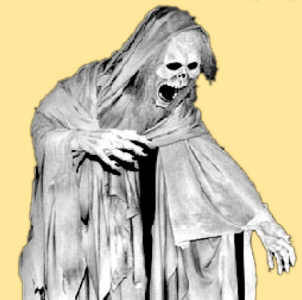It is curious that an English family, no matter how long settled in Ireland, should have acquired the ministration of a banshee, but, besides the Ross Lewins, both the Stamers and the Westropps were so endowed in Clare. The Westropps had also death warnings in the shape of a white owl and the headless coach. This bird last appeared, it is said, before a death in 1909, but it would be more convincing if it appeared at places where the white owl does not nest and fly out every night. The banshee has been conspicuously absent of late years, although on the death of my father, the late John Westropp, at Attyflin, in 1866, keening and weird lamentation, (probably of some of the country folk who held him in deep affection), were heard the same night by the servants and some of the family. When Mrs. Stamer died at Stamer Park, Ennis, in January, 1883, the banshee and death coach were also supposed to have been heard, though far more satisfactory explanations of the noises were forthcoming. The popular belief in Clare is that each leading Irish race had a banshee, Eevul, the banshee of the royal O’Briens, ruling over twenty-fiveo ther banshees always attendant on her progresses. The stream from Caherminaun to Dough, (the Daelach), was called the ‘Banshee’s Brook,’ and when, as sometimes happens after an unusually dry summer, the water gets red from iron scum, everyone is on the alert to hear the rustling flight of the banshee, (not apparently Eevul), and her attendants through the air. In the prevailing suspense someone generally succeeds, and then there is unrest and fear until a death removes the uncertainty. There are many other modern tales of banshees. Mr. Casey of Ruan heard a banshee cry at the death of his father. The late Dr. MacNamara of Corofin was similarly honoured; indeed, when his family lived at Ballymarkahan, near Quin, there were numerous ‘authentic instances’ recorded. The Corofin banshees, however, did not lag behind the age by maintaining aristocratic prejudices, for one, at least, used to sit near the cross road leading to the workhouse and foretell the deaths of the poor inmates. Westropp ‘Clare’ 189-190


